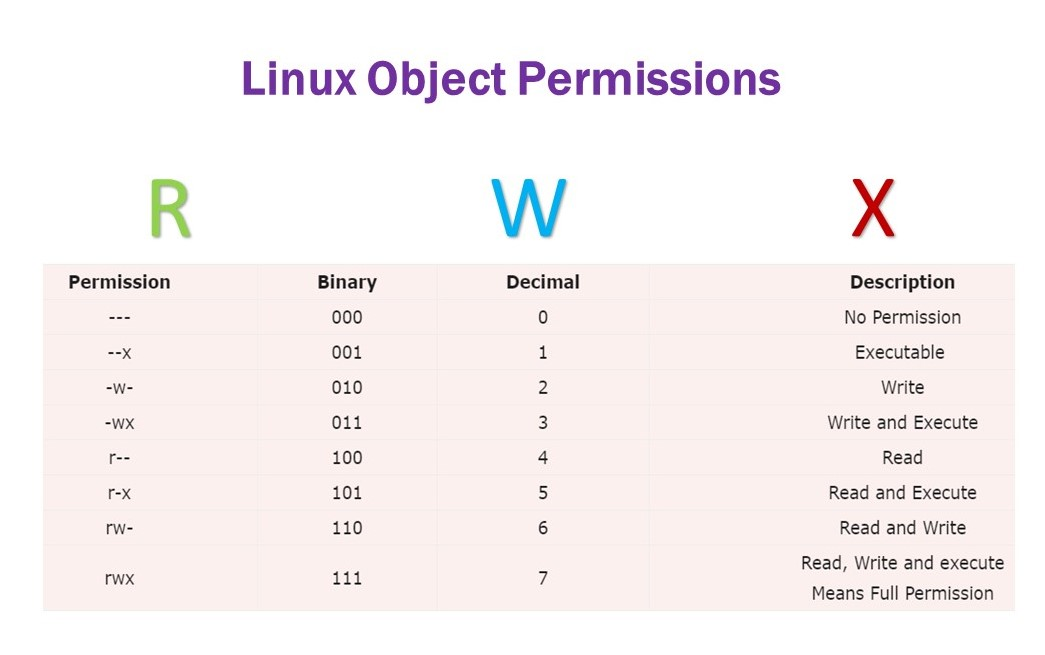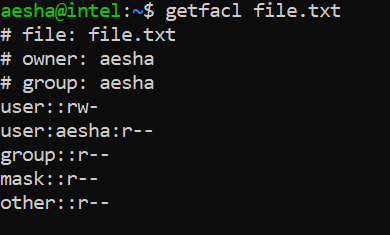Day06: File Permissions and Access Control List🎯
 Aesha Shah
Aesha ShahTable of contents

What is File Permission & ACL 💁♂️
File permissions and Access Control Lists (ACLs) are two mechanisms used in Unix-like operating systems to control and manage access to files and directories. They both play a crucial role in file security, but they differ in their complexity and capabilities.
File Permissions...🔐
File permissions are a simple and effective way to control access to files and directories. They are based on three basic permissions: read, write, and execute, which can be assigned to three different groups of users: owner, group, and others. The chmod command is used to modify file permissions.
Create a simple file and do
ls -ltrto see the details of the files.Each of the three permissions are assigned to three defined categories of users.
The
lscommand in Linux is used to list the contents of a directory. The-loption is used to display the contents of the directory in a long format, which includes information such as file permissions, ownership, size, and modification time. The-toption is used to sort the files and directories by their last modification time, with the most recently modified files and directories appearing first. The-roption is used to reverse the order of the listing, so that the oldest files and directories appear first. Finally, the-ltroption is used to combine the-l,-t, and-roptions, which results in a long format listing of files and directories sorted by their last modification time in reverse order.

Now see the example of file permissions. I am creating one file temp.txt and this file have permissions like below image have.


Now I want to give whole access to my temp.txt so I am using chmod to change the permissions.

Now temp.txt have whole permissions read, write and execute.

Access Control Lists...👩💻
Access Control Lists (ACLs) provide a more flexible permission mechanism for file systems. They allow you to give permissions for any user or group to any disk resource. ACLs are used to define more fine-grained discretionary access rights for files and directories. They are designed to assist with UNIX file permissions. setfacl and getfacl are used for setting up ACL and showing ACL respectively ¹.
Here are some useful commands for setting up ACL:
To add permission for user:
setfacl -m "u:user:permissions" /path/to/fileTo add permissions for a group:
setfacl -m "g:group:permissions" /path/to/fileTo allow all files or directories to inherit ACL entries from the directory it is within:
setfacl -dm "entry" /path/to/dirTo remove a specific entry:
setfacl -x "entry" /path/to/fileTo remove all entries:
setfacl -b path/to/file
Let's try out the commands getfacl and setfacl
setfacl command is used to set access control lists (ACLs) of files and directories, whereas getfacl command is used to get file access control lists. For each file, getfacl displays the file name, owner, the group, and the Access Control List (ACL).


Subscribe to my newsletter
Read articles from Aesha Shah directly inside your inbox. Subscribe to the newsletter, and don't miss out.
Written by
